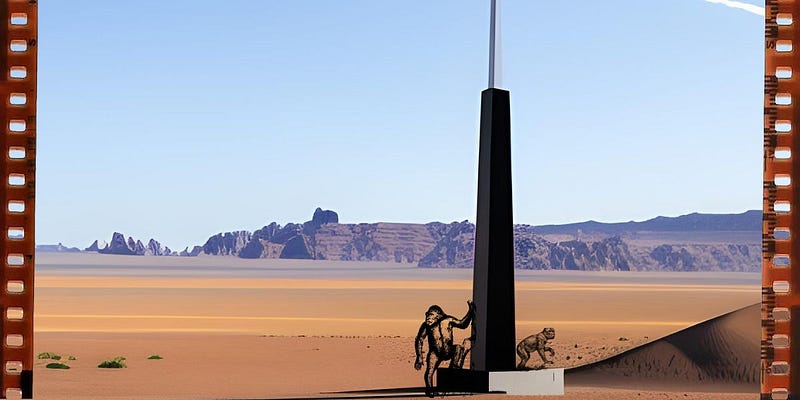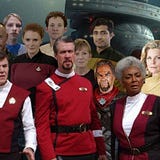Odin’s Insights into 2001: A Space Odyssey
What does the Kubrickian masterpiece tell us about the future we inhabit?

Kubrick’s earlier success of Dr. Strangelove catapulted the director into the public eye, but 2001: A Space Odyssey was by no means a perfect storm for critics or audiences in 1968. The slow pacing would become a hallmark Kubrickian artifact, but it tried the patience of the casual viewer to the breaking point.

I remember first watching the film as a child and being struck by certain powerful moments: the apes in the beginning, certain sequences between HAL and Dave, the Velcro-slippered flight attendant in the orbital shuttle. There are gulfs between those fiery snapshots. Was I bored? I honestly don’t remember, but I suspect that my experience was something more akin to a trance.
When the film premiered, the great artistic savants of the era like David Bowie and John Lennon immediately understood its potency. For one thing, the transcendent visuals were like nothing that had come before.
But various 1960s luminaries saw other stars within the celluloid than just those provided by the FX department. The philosophic premises underlying the narrative, the exploration of human consciousness, the challenges presented by the tools we use to master reality… these were presented on a canvas that presented each viewer with the opportunity for their individual self-reflection.
Budding scientists saw in 2001 much to be adored as well.
Much of the film was written haphazardly, jinked into position by Arthur C. Clarke and Stanley Kubrick as they went. But the incredible levels of research they went into when considering technology laid a foundation for utter believability that wooed audiences searching for reality-soaked portrayals of outer space.

Some of that research, like the theories of anthropologist Raymond Dart, which underpin the apes-using-bones-as-weapons motif in the early part of the film, have been discredited. And yet, the bone, spinning toward the sky and becoming a spaceship, clearly harken to our species’ remarkable capacity to spin godhood from the raw materials of our little world.
We’re tool-users, evolved from goop, seeking a grand adventure among the stars.
Now, with billionaires launching cars into space and drinking bubbly to their soaring stock prices, the future looks like 2001’s darker twin. We’re living inside a blend of science fiction realism and Dr. Strangelove, perhaps with a bit of A Clockwork Orange thrown in for terrifying measure.
And yet, the hope, mystery, and beauty of A Space Odyssey endures. For all that the 1968 masterpiece got wrong about the future, and for all that it got right, a timelessness lingers in every frame: this is a film about humanity’s search for meaning, about our capacity for cognitive growth, and the ways we relate to our inevitable demise. One way or another, 2001 is a film that will endure as one of the defining masterpieces of the 20th century, and, I suspect, of all filmmaking history.
Hi there! I’m Odin Halvorson, an independent scholar, film fanatic, fiction author, and tech enthusiast. If you like my work and want to support me, please consider subscribing to a paid tier for as low as $2.50 per month!
Want more of my film writing? Try these!


